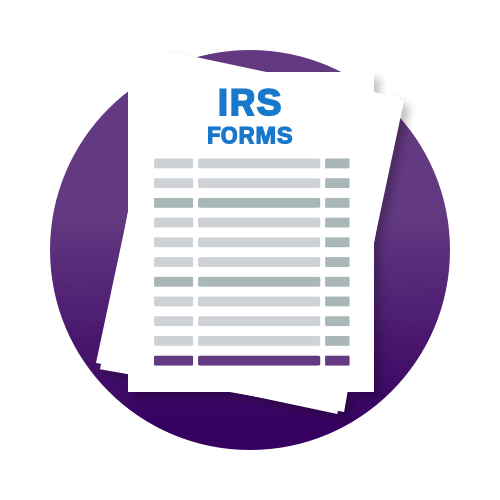- Find an office
-
File Your Taxes
 Find a Location
Find a Location -
Resolve Tax Issues
 Resolve Tax Issues
Resolve Tax IssuesResolve Tax Issues
-
Tax Resources
 See all Tax Help
See all Tax HelpTax Tools
Tax Tips & Resources
- Where's My Refund
- Refund Advance
- Hiring Local Jobs!
- Tax Services
- Promotions & Coupons
- Careers
- Search
- Contact Us
- Feedback
-
 Log in | Sign up
Log in | Sign up

JH Accounts
|
|
Oh no! We may not fully support the browser or device software you are using ! To experience our site in the best way possible, please update your browser or device software, or move over to another browser. |
IRS Forms: 1040
What You Need to Know About 1040 Tax Return Forms

A 1040 tax form is the main form for a tax return that gets filed with the IRS when you are a US citizen or resident with taxable income to report.
The very first 1040 tax form was published in 1914, a year after the 16th amendment, which authorized Congress to impose a federal tax on personal income, was ratified in 1913. At the time, fewer than 1% of Americans were subject to federal income tax. As the tax base widened during World War II, the tax code grew more complex.
Originally one page, the 1040 tax return form swelled to two pages with supplementary forms and schedules that could be attached as needed. The 2017 tax reform attempted to imitate the simplicity of the original tax return from a century ago, while at the same time addressing the complexities of the modern tax code and renaming several key forms as well.
Why would I file a Form 1040 instead of 1040A or 1040EZ?
As of 2018, Forms 1040A and 1040EZ are no longer available although you can still use them to file tax returns for prior years. The shortening of the 1040 tax form through the 2017 tax reform caused these forms to become redundant.
The chief purpose of Form 1040-SR is to help seniors by providing a form with larger print. Form 1040-SR is the same as the Form 1040, only with larger print and the full standard deduction table, which includes additional amounts for taxpayers 65 or older or who are blind.
Is Form 1040 the correct tax return form for me?
For most taxpayers, 1040 is the appropriate tax filing form to use. However, if any of the following situations apply to you, the 1040 tax form may be the wrong form or require additional forms:
- You own a business. Self-employed taxpayers have a variety of filing options to choose from. If you operate as a sole proprietor or single-member LLC taxed as one, you must use Schedule C, which goes with your 1040 tax return. However, if you operate as an S or C corporation or as a co-owner in a partnership, multiple-member LLC, corporation, or cooperative, there are other business tax forms that must be filed first before you file your personal 1040 tax return.
- You live and/or work in a US territory or possession. If you are a resident of American Samoa, Guam, US Virgin Islands, or the Commonwealth of the Northern Mariana Islands (CNMI), each of these territories have their own corresponding tax return suffix (e.g. 1040-VI). The only exception is form 1040-PR, which Puerto Rico residents submit if they are self-employed. There are additional special rules if you reside or work in a US territory or possession for all or part of the tax year.
- You are not a resident of the United States. If you are an immigrant and do not meet the requirements to file as a resident alien, you must use Form 1040-NR.
- The taxpayer or spouse is age 65 or older. The Form 1040-SR was designed with larger, easier to read print than the Form 1040. Taxpayers 65 or older can file either Form 1040 or 1040-SR and taxpayers under 65 can only file Form 1040.
Because trust, guarantees, convenience & money all matter

-
TRUSTED GUARANTEES.
Be 100% certain about your money & your taxes, year after year.
-
NATIONAL PRESENCE. LOCAL HEART.
We’re in your neighborhood & inside your favorite Walmart store.
-
40+ YEARS. 65+ MILLION RETURNS.
The kind of trusted expertise that comes with a lifetime of experience.





